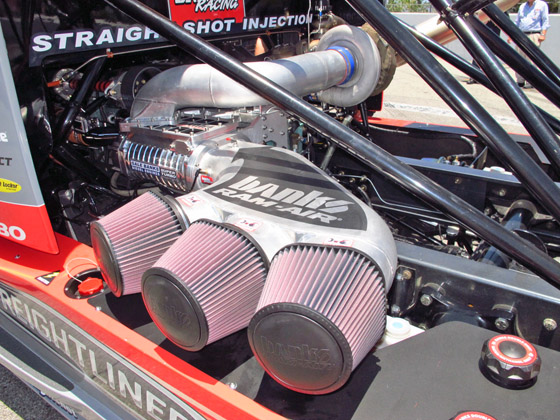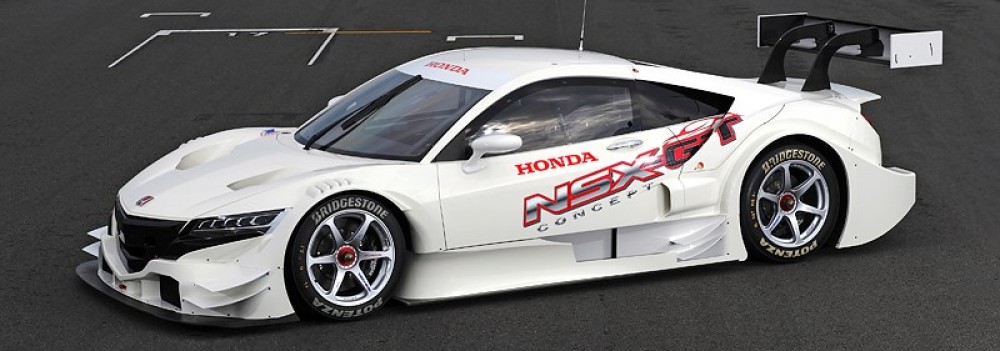 Big rig stunt and race driver Mike Ryan teamed up with Gale Banks of Banks Power to redesign the compound turbo setup on his Freightliner race truck for this year’s Pikes Peak International Hill Climb. Mike had previously been running turbos designed for tractor pulls. The problem is the setup only made power at high engine rpm’s and it wasn’t getting enough air into the Detroit Diesel inline-6 at low rpm’s. This made the truck sluggish accelerating out of the turns on the hill climb. Gale Banks thought it would be more useful for Mike to have a super-turbo which is also known as twincharging. This is when an engine has both a belt-driven supercharger for low rpm boost and an exhaust-driven turbocharger for efficient high rpm boost. Banks Power also adapted a fuel injection system for use with a water and methanol mixture. Meth injection is used before and after the supercharger as well as being directly injected into the cylinders to lower the temperature of the compressed air for more efficient combustion. They also designed a water fogger system to cool the intercooler and the front brakes of the truck. The end result is 2,500 horsepower and 5,000 foot-pounds of usable low-rpm torque. Gale Banks explains all of the upgrades in this interview:
Big rig stunt and race driver Mike Ryan teamed up with Gale Banks of Banks Power to redesign the compound turbo setup on his Freightliner race truck for this year’s Pikes Peak International Hill Climb. Mike had previously been running turbos designed for tractor pulls. The problem is the setup only made power at high engine rpm’s and it wasn’t getting enough air into the Detroit Diesel inline-6 at low rpm’s. This made the truck sluggish accelerating out of the turns on the hill climb. Gale Banks thought it would be more useful for Mike to have a super-turbo which is also known as twincharging. This is when an engine has both a belt-driven supercharger for low rpm boost and an exhaust-driven turbocharger for efficient high rpm boost. Banks Power also adapted a fuel injection system for use with a water and methanol mixture. Meth injection is used before and after the supercharger as well as being directly injected into the cylinders to lower the temperature of the compressed air for more efficient combustion. They also designed a water fogger system to cool the intercooler and the front brakes of the truck. The end result is 2,500 horsepower and 5,000 foot-pounds of usable low-rpm torque. Gale Banks explains all of the upgrades in this interview:
Here’s some race footage of the Freightliner on course at Pikes Peak. Mike and Gale talk about the effectiveness of the super-turbo system at the end. The course was pretty wet this year which resulted in slower times, but these two guys want to come back for 2014 and be the first semi in the 11-minute range.
Sources: The Fast Lane Truck and Banks Power Insider on YouTube
